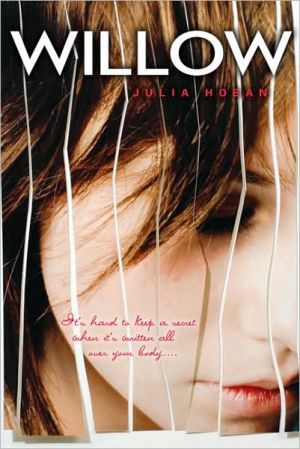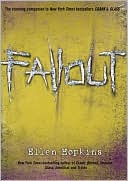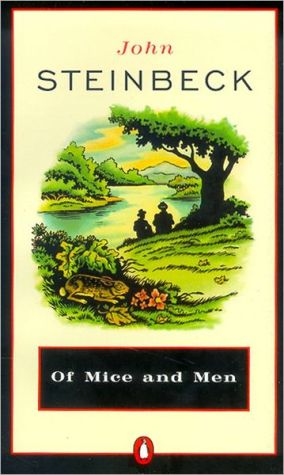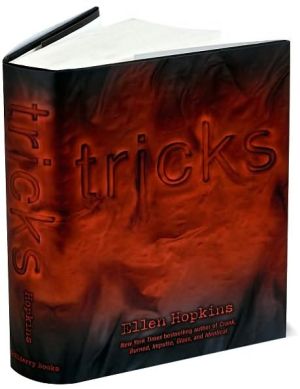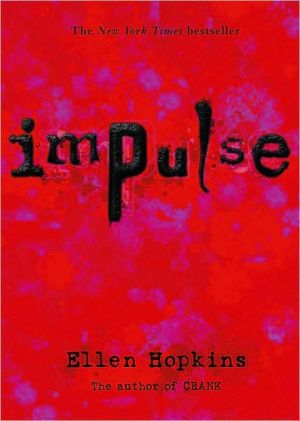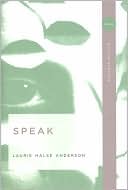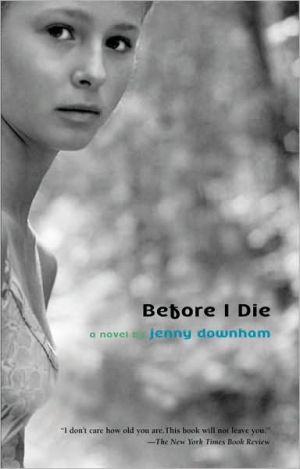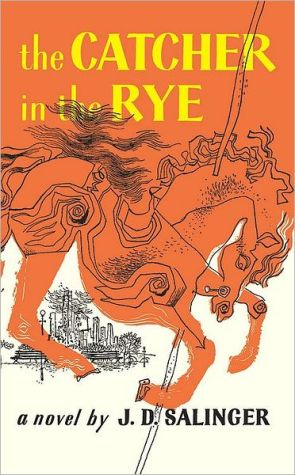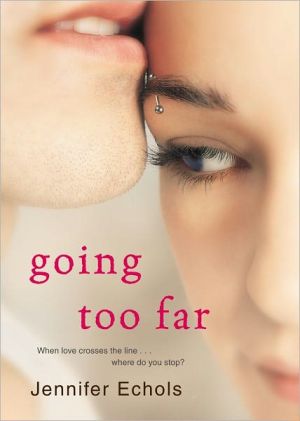Willow: It's Hard to Keep a Secret When it's Written All Over Your Body...
Seven months ago, on a rainy March night, sixteen-year- old Willow's parents drank too much wine and asked her to drive them home. They never made it. Willow lost control of the car and her parents died in the accident. Now she has left behind her old home, friends, and school, and blocks the pain by secretly cutting herself. But when Willow meets Guy, a boy as sensitive and complicated as she is, she begins an intense, life-changing relationship that turns her world upside down.\ Told in an...
Search in google:
Seven months ago, on a rainy March night, sixteen-year- old Willow's parents drank too much wine and asked her to drive them home. They never made it—Willow lost control of the car and her parents died in the accident. Now she has left behind her old home, friends, and school, and blocks the pain by secretly cutting herself. But when Willow meets Guy, a boy as sensitive and complicated as she is, she begins an intense, life-changing relationship that turns her world upside down. Told in an arresting, fresh voice, Willow is an unforgettable novel about one girl's struggle to cope with tragedy, and one boy's refusal to give up on her.Publishers WeeklySeven months after killing her parents in a car accident, 16-year-old Willow Randall has moved in with her married older brother's family in New York City, where she grapples with her overwhelming emotions, as well as her brother's silent anguish, by cutting herself with razors. When Guy, a fellow student, learns Willow's secret, they develop a tentative intimacy. The stark clarity of the present tense, third-person narration echoes the numbing effect that Willow achieves through cutting-"Of course any sharp edge could do in a pinch, and Willow has used them all: nail scissors, a steak knife, a man's razor.... But Willow is a purist." Despite explicit descriptions of Willow's wounds, the narrative steers clear of moralization-cutting is characterized as part of Willow's fractured sense of self, rather than part of a larger epidemic. Though Guy mainly serves as a means for Willow to rediscover human connection, and is never as fully realized as she is, his need to understand the girl whose favorite book is Tristes Tropiques but who carries razors in her backpack, is authentically tender. A credible depiction of a grieving girl's struggle toward self-forgiveness. Ages 14-up. (Apr.)Copyright © Reed Business Information, a division of Reed Elsevier Inc. All rights reserved.
\ Publishers WeeklySeven months after killing her parents in a car accident, 16-year-old Willow Randall has moved in with her married older brother's family in New York City, where she grapples with her overwhelming emotions, as well as her brother's silent anguish, by cutting herself with razors. When Guy, a fellow student, learns Willow's secret, they develop a tentative intimacy. The stark clarity of the present tense, third-person narration echoes the numbing effect that Willow achieves through cutting-"Of course any sharp edge could do in a pinch, and Willow has used them all: nail scissors, a steak knife, a man's razor.... But Willow is a purist." Despite explicit descriptions of Willow's wounds, the narrative steers clear of moralization-cutting is characterized as part of Willow's fractured sense of self, rather than part of a larger epidemic. Though Guy mainly serves as a means for Willow to rediscover human connection, and is never as fully realized as she is, his need to understand the girl whose favorite book is Tristes Tropiques but who carries razors in her backpack, is authentically tender. A credible depiction of a grieving girl's struggle toward self-forgiveness. Ages 14-up. (Apr.)\ Copyright © Reed Business Information, a division of Reed Elsevier Inc. All rights reserved.\ \ \ \ \ The Bulletin of the Center for Children's BooksThe razor doesn't hurt her. Not really. Not like some things could, anyway." That's the creed of Willow, seventeen, who's not only devastated from the death of her parents months ago but also wracked with guilt, since she was behind the wheel when their car hit a tree. She cuts obsessively to control her unbearable inner pain, a secret she alone knows until a classmate, Guy, stumbles on the truth. A frantic Willow convinces Guy not to tell her new guardian, her older brother, but Guy then feels invested in Willow, and the two develop an intense and complicated involvement that begins to head toward romance. Lush and intense, tortured and romantic, this is a compelling story with some well-nigh irresistible elements, especially the handsome young man who keeps Willow's secret and helps her toward healing. Though the book strains Willow's self-blame a bit, it's understandable that the circumstances elicit tremendous guilt, and it's credible that her grieving older brother, himself struggling with the situation, doesn't see the distress of his younger sister. The focus here is more on Willow's emotional turmoil than on the cutting per se, but Hoban effectively creates a psyche that finds cutting a savage method of protection from overwhelming feelings. Taking quite a different tack from Patricia McCormick's Cut (BCCB 1/01), this is a turbulent and emotional tale of a girl as much wounded as wounding \ —Deborah Stevenson\ \ \ Children's Literature\ - Elizabeth Sulock\ Hoban has created a protagonist who is her own worst enemy in this story of remorse and recovery. Willow Randall is haunted by a tragic secret: she was the driver during her parents' fatal car accident. Orphaned and living with her older brother, who barely speaks to her, she is the new girl at school and has been labeled as a killer. To mask her anguish, she cuts herself. Her world is transformed when she meets classmate Guy, who wakens her from her sleepwalking state and helps her reconnect with life. While Willow's inner conflict feels authentic her brother's financial conflict feels forced, though Hoban's smooth writing overcomes this. The emphasis on cutting, which includes detailed descriptions of the razor sliced wounds, centers on Willow's emotional issues, not a larger trend in her community. Young adult readers will generally be absorbed in this expressive third person narrative that is part love story, part painful reality. Reviewer: Elizabeth Sulock\ \ \ \ \ School Library JournalGr 8 Up\ Willow Randall, 17, hides a dark secret from the only family member she has left, her older brother. The survivor of a terrible car accident that killed their parents, she is now in the care of David and his wife. Trapped by the guilt she feels because she was behind the wheel, she doesn't want her brother to find out that she is a cutter. Willow depends on her blades to release the anguish and isolation she feels both at home and at school. David doesn't seem to want to talk about what happened, and, wherever she goes, she feels as if students are whispering about Willow the parent killer. Living a shadowy existence, she is astonished at the turn her world takes when a boy she meets at the library takes the time to understand her agony. In this novel that is in part a love story, Hoban takes readers on an intense journey that allows them to see a cutter's painful reality.-Caryl Soriano, New York Public Library\ \ \ \ \ \ Kirkus ReviewsDiluted by an expository and inconsistent narrative voice, this standard-issue problem novel will nonetheless appeal to readers interested in the topic of self-harm. Months ago, Willow's parents drank "a second bottle of wine" at a restaurant and handed their daughter, equipped only with a learner's permit, the car keys to drive them home. Rain and lack of experience caused a crash, killing both parents. Her brother now treats her with only "aloof courtesy," and Willow secretly slices herself with razor blades to numb the crushing guilt and loneliness. Archetypal references-Shakespeare, classical mythology-somehow fail to add any extra literary layers. The overly explanatory third-person narration ("She's a little flustered, a little embarrassed, and a little attracted too") clashes with the immediacy of the present-tense voice, and excessive italics distract more than they emphasize. However, Willow's acknowledgment of the cause of her grief-that she'll never be anyone's daughter again-is a sharp insight, and Hoban's appropriately complex portrayal of cutting makes this a good choice on a crucial subject. (Fiction. YA)\ \
